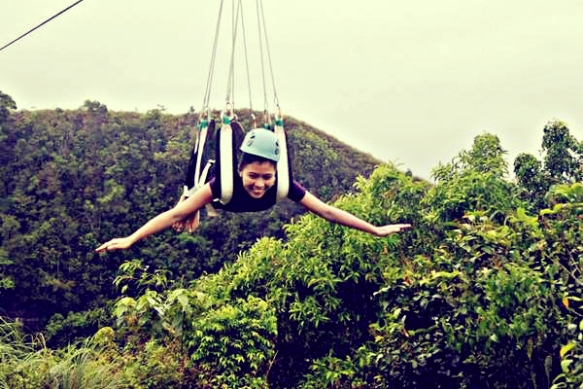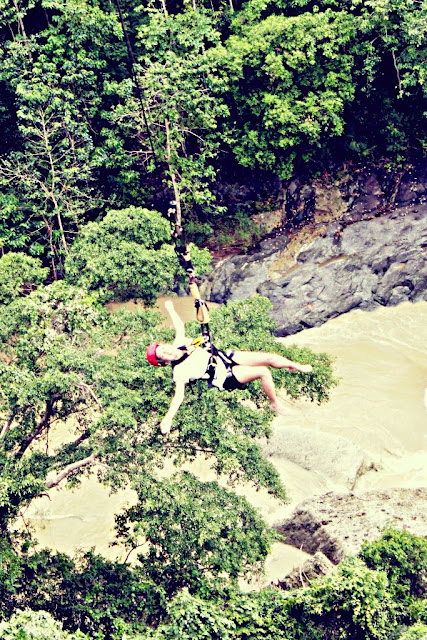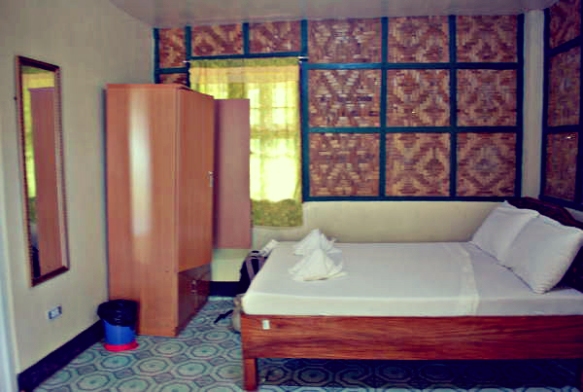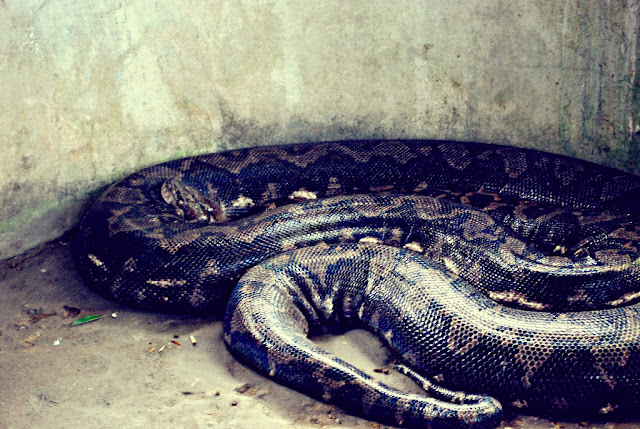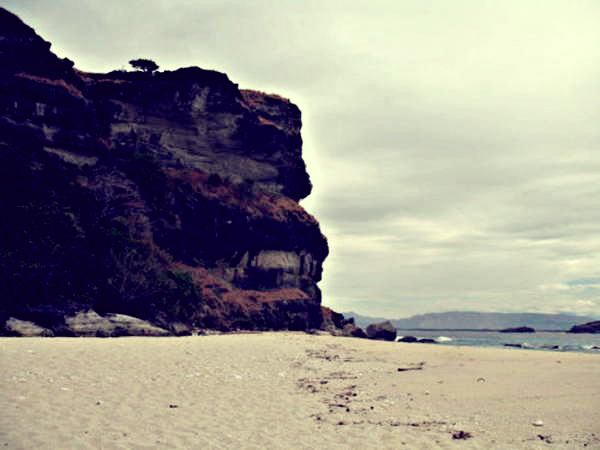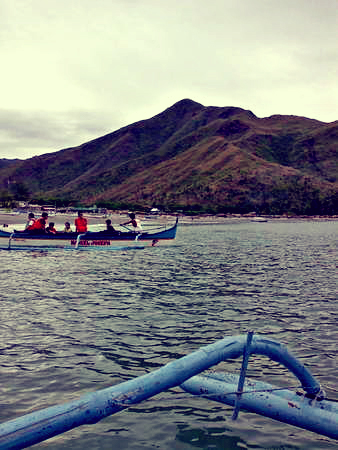16 March 2011
EAT Danao or Extreme Educational Eco Adventure Park
As lifted from their website http://www.eatdanao.com, E.A.T. Danao is the town’s newest brainchild. “E.A.T.” does not only pertain to the partaking of the town’s organically grown and fresh food which is in abundance but also a whole new experience far superior to the common offer of Chocolate Hills’ tour, tarsier and dolphin/whale watching.
Danao offers unique and exhilarating activities in different categories set amidst verdant valleys framed by the majestic expanse of mountain ranges.
All these activities converged in one place which the town calls the Danao Adventure Park. The Park is located at barangay Magtangtang, 72 kilometers from the City of Tagbilaran and only about two (2) hours ride away.
As of December 2008, the zip line in Danao town, province of Bohol is the Philippines’ longest and tallest zip line. It traverses around half a kilometer from one mountain to another, taking you to a one-minute exhilirating ride.
Charges for Recreational Equipments/Facilities and Activities
- Plunge – P700 per person
- Sky Ride – P250 per person
- Caving – P350.00/person (minimum of 5 persons)
- River Tubing – P200.00/person
- Kayaking – P200.00/person
- River/Mountain Trekking/Hiking – P200.00/person
- Wall Climbing – P100.00/person
- Rappel (60m) – P600.00/person (Minimum of 5 pax)
- Rappel w/ root climbing – P400.00/person
- Suislide – P350.00/person
- Tent Rental @ 200.00/rented tent, then 100.00/own tent
- Camping – P25 per camper
- Village Tour – P200.00/person
- Ziplet @ 100.00/pax
We reached the place at around 12 noon, chose our beds, unpacked our stuff and headed for the dining area. The ladies seemed to ignore the wide array of sumptuous dishes served before them, for fear of bloating in their meticulously chosen bikinis. haha! Some even took their laxative teas after. Good thing Manong Lloyd Cabanlit, our driver from Johnny Tours RV, had a good appetite. 🙂
After a quick rest, it’s off to the river for some kayaking! It was drizzling and we passed by some farmers along the way. They offered to get us some coconuts for free. They were so kind but we just couldn’t eat pro bono at the expense of their hard toil so we offered to pay P10 per coconut. After an exhausting but rewarding rage against the rapids, we drank coconut water straight from the shell and thought of this is as one of the things we love about provincial life. You would never go hungry when you have a coconut tree in the back yard. The local cut out a makeshift spoon from the inner shell of the coconut and this is what we used to scrape the soft and deliciously divine white coconut meat off the shell.
I never knew it only took 30mins to grow those muscles on our arms. After kayaking, we headed to the rappel station for our 60ft descent down an almost vertical limestone face.
Rappelling was very tiring and silly as I was, I thought I had an automated control to just press when I wanted to go down. I didn’t know it was just rope you place to your side when to wanted to descend, and then place at your back when you wanted to stop. Or was it the other way around??? I would pause and stop in midair only to look down and find that I’m still not halfway there. That only adds to the increasing fear and discomfort. And when the crew shouts “lean back”, I would instantly panic and lean back almost comically, keeping in mind the crew’s scary warnings of getting the shirt caught into the intertwined ropes or getting the skin burnt because of rope friction. So when I was a little past the midpoint, I just closed my eyes and released the lock for a fast and almost furious descent into the guide below. Thank God, I made it alive.
But to my dismay, the ride back up was equally fear-inducing and cuss-provoking! You make the ascent through a cable wound by a motor at the top, so you expect the ride to be fast and smooth. But no! It was snail-paced and there were abrupt pauses! Those were the moments when you think that the rope snapped because of too much tension and you just surrender yourself to the piercing rocks below. But that’s just how the machine operates, with 3 traumatizing brief stops that add to the overall drama. The 2nd stop will send chills down your spine and you’ll say out loud, “now this is really it, I’m going to miss my mommy!”. The third stop will just set you chuckling “you won’t fool me this time. haha.”
Next was the zipline, or the suislide as EAT Danao calls it.
Suislide is basically a zip-line consisting of a pulley suspended on a cable mounted on an incline cliff. The Suislide has two lines, going forth and back. Its starting point is parallel to the Sky Ride and Plunge’s height.
Suislide is the local version for zipline, a sky ride or a slide for life. Sui-slide is coined from the word, “Suis“ (the sound of the cable ride once you get to slide) and “slide”. It could also mean for some who is so much petrified with heights to be a suicidal slide. It traverses around half a kilometer from one mountain to another, taking you to less than a minute exhilarating ride…
It’s a pretty nasty name, if you ask me. Not a good marketing strategy at all. Haha. But for the adrenaline junkies, like me or as I’d like to come off (fine ridicule me all you want), it’s a dream.
Trying out the zipline was a surreal communion with mother nature. I marveled at how beautiful the scenery was with the rapids central to the gorge and the thick blanket of trees that serve as home to a diverse group of organisms. I thought “this is the true essence of tourism I guess, getting people to appreciate and cry in awe for the natural wonders that a place has to offer. it is having to enhance, and not commercially industrialize, natural spots and make it accessible for all”. For a second, I wished to be in midair forever.
the face of genuine happiness and content.
17 March 2011
Caving was scheduled at 7am and Manong Chedeng (whose name’s origin you will know as you go along this post) was assigned as our cave guide. Chedeng, together with two other guides whose names start with J forgive me for my selective memory, told us that we will only be doing moderate spelunking as the rains are starting to pour and it is not a great idea to explore caves with ear-high water levels, snakes and whatnots that come with extreme spelunking. And did I fail to mention that in the difficult level, you need to be able to swim and rappel and walk 6-7 hrs through a hiking trail without any makeshift rope guides/handles and stone path. Now that’s what I call extreme!
manong Chedeng being oh so informative! He told us that it takes about a hundred (or was it a thousand??) years to grow an inch of a stalactite so it was an absolute no-no to touch the stalactites as you may break off a piece that took a century to grow!
This is one of the many fancy-shaped formations inside the cave. I forgot how they call this one, umbrella formation perhaps? I could remember, as I actually wrote them down, the mushroom (also called the nose), grotto, candlestick, and angel formations. The key is imagination, even just a tiny bit of it because some of the formations have very striking resemblances to certain objects or beings.
Limestone droplets deposited over time, that’s how you form these wonders. The caves were actually used by rebel soldiers during war time as their hideout but as darkness fell, they are faced with a dilemma – what will be their source of light? Chedeng told us that the soldiers, phasing out torches and bonfires as the smoke could very well be seen by the enemy, resorted to fireflies and glowing mushrooms. How ingenious!
We turned off our cap lamps for a minute to know what pitch black looks like and boy, it was .. well, NOTHING. You couldn’t see a thing!
Another group photo. Manong Chedeng shouts “Chedeng” once he presses the shutter, thus his name. There are just certain spots in the cave where you could have your photo taken. The camera’s flash actually causes the limestone to darken and so some spots in the cave are being rehabilitated. It is advised not to have your photo taken in these specific rehabilitated spots. Only chedeng takes the photos, so you have to give your camera to him prior to spelunking and he keeps it safe within his dry bag (which we really really love, btw so we purchased a similar one 2 days after in SM Cebu. haha).
After the session, the team headed back to the accommodation for a change of clothes before heading to the Plunge station for the jump of our lives! Look how tired we are in this photo!
The plunge (separate video post on https://throwcautiontothewind.wordpress.com/2011/03/20/the-plunge-of-my-life-quite-literally/ )
The plunge was the highlight of my stay in Danao. It was the epitome of an adrenaline rush! Once you’re in free fall, you just have to shout to the top of your lungs and let it all out. Curse all you want! The descent is about 75m as what chedeng has been bragging and was patterned before New Zealand’s. But Danao made it grander because it was 15m longer than that of NZ. After freefall, you have to swing several times before being lifted. They throw you a safety rope that you have to fasten onto your harness because this will hoist you up. With shaking hands, I tried but failed twice before getting a grip on the rope.
Finally I was on the platform again, with shaken knees and a racing heart but now a braver spirit!
EAT Danao is a must on everyone’s Bohol itinerary!









